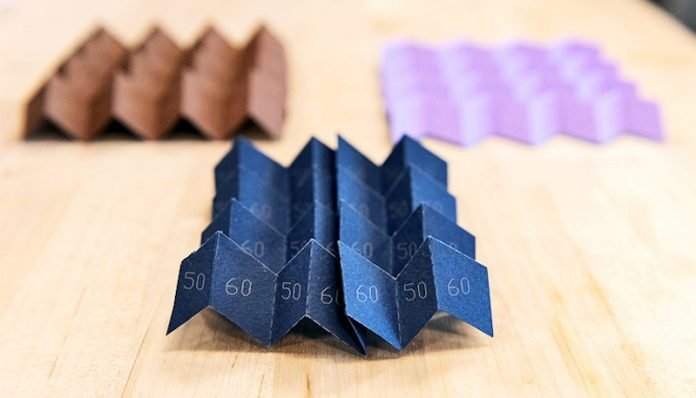
In a new study, researchers found that a new type of origami can instantly change many of its structural characteristics.
The origami can morph from one pattern to another or even a hybrid of two patterns.
This material can be used to build stronger drones and concert halls.
The research was conducted by a team from the School of Civil and Environmental Engineering at Georgia Tech.
The team also develops new types of origami-based structures that combined the characteristics of two types of origami.
Origami-based structures are very useful in building solar arrays, acoustic systems, and crash protection systems.
The new material developed in the study could even do these tasks better.
The researchers started with two types of origami patterns, and both can form into sheets of repeating patterns.
The Miura-Ori looks like folded zigzags, and the eggbox looks like a mountain range with repeating peaks and valleys.
The researchers found that both origamis can compress into a very small space but respond to bending differently.
The new origami pattern is called morph and it can change structural features instantly.
The team suggests that the new type of origami can be used in many areas.
For example, in the drone crash protection system, the new origami pattern may offer other options or alter aspects of its impact resistance.
The new pattern can also take on a hybrid structure, where certain rows fold into one configuration and others fold in the other.
This offers a lot of customization options for structures based on the morph pattern.
The team also found that a unique characteristic of the morph pattern when a Miura-ori row lies between two eggbox rows.
In this new instance, the Miura-Ori pattern locks into place.
The strong locking may help structures limit the amount of expansion possible and change that limit on the fly.
The lead author of the study is Glaucio Paulino, a professor in the School of Civil and Environmental Engineering.
The study is in Physical Review Letters.
Copyright © 2019 Knowridge Science Report. All rights reserved.



